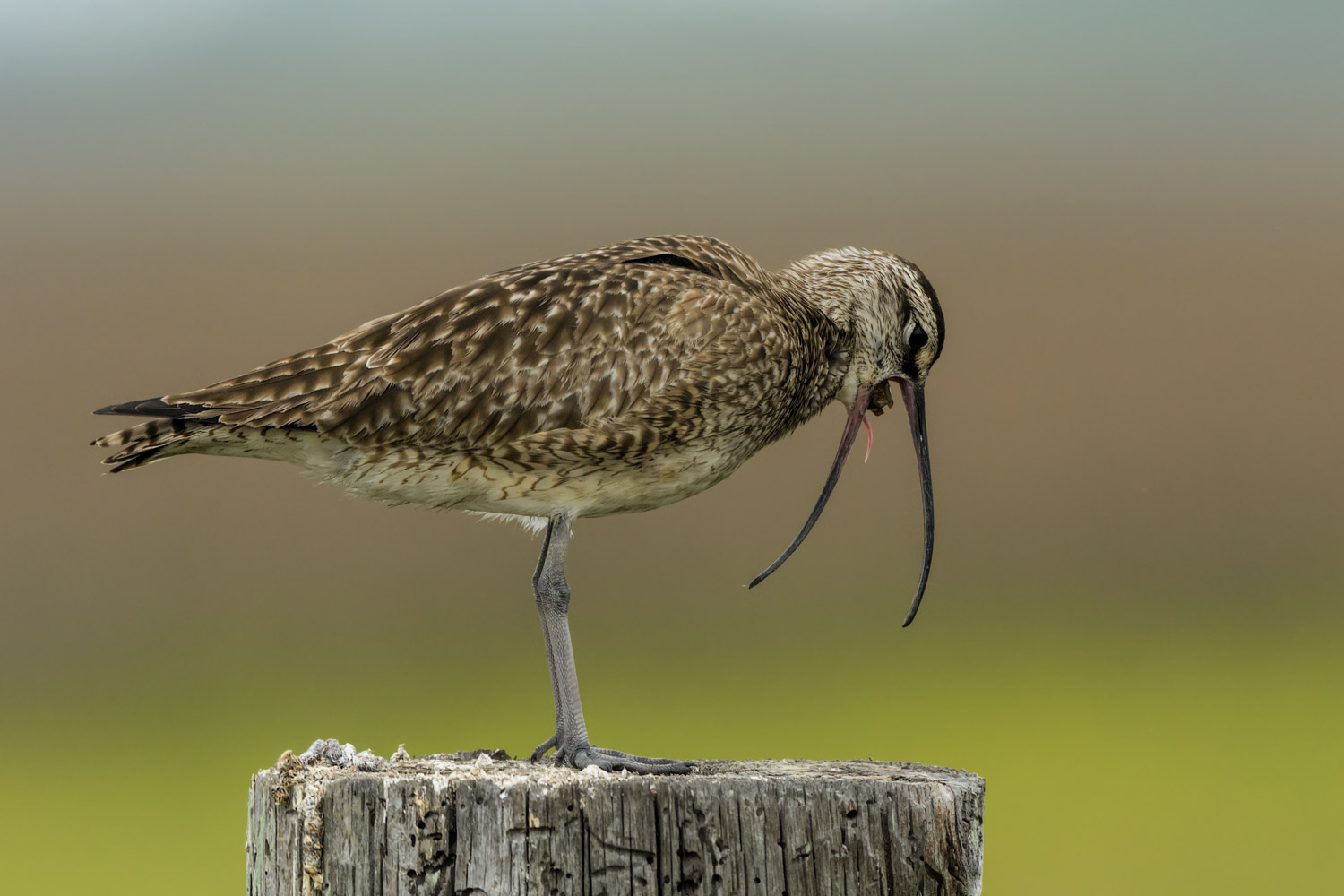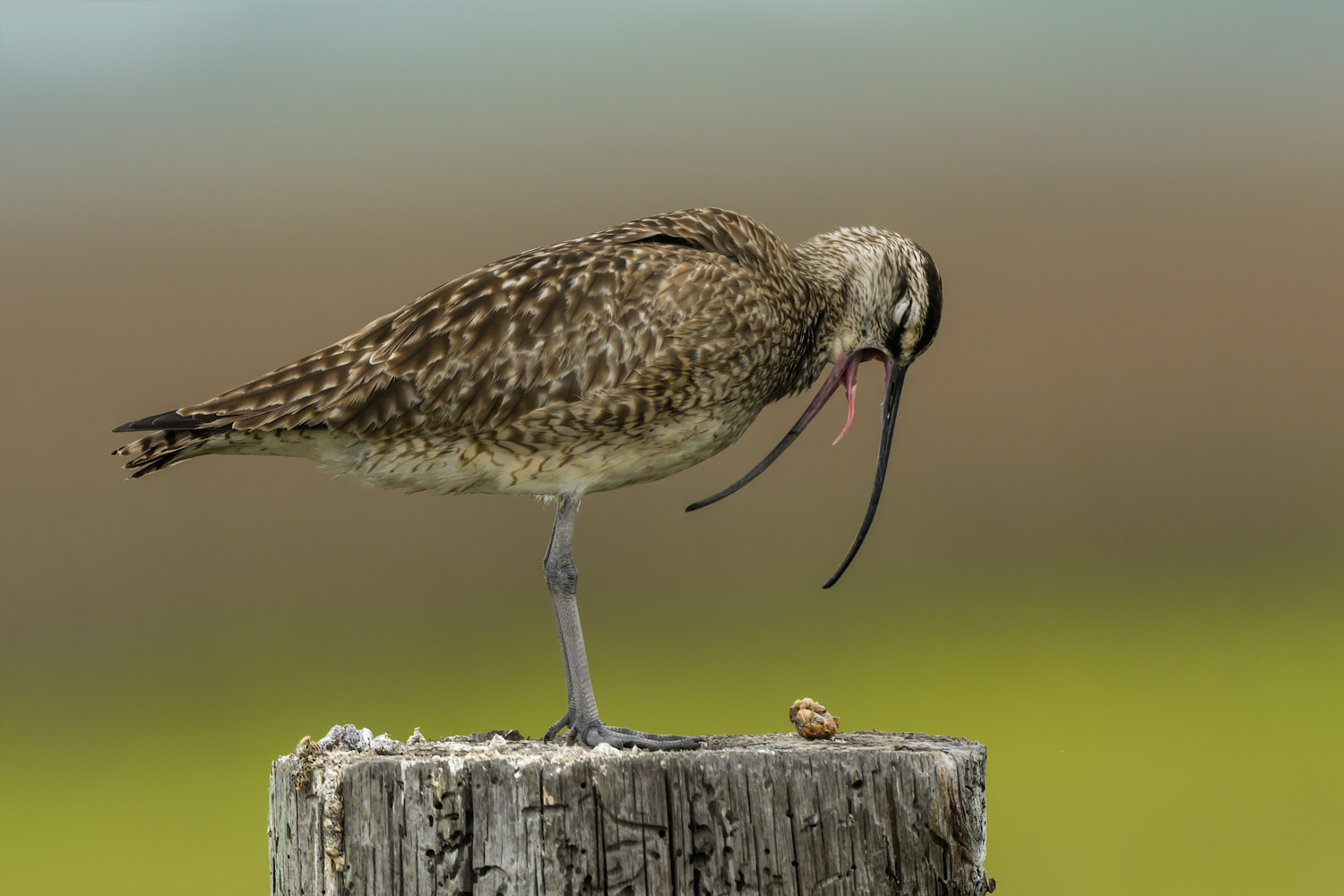Whimbrel - Bolivar Peninsula (TX), April 26, 2017
Join me in such an imaginary session as I approach the subject slowly and obliquely, establish rapport, and gradually lead the subject into a series of interesting poses.
My Instruction: O.K. why don't you hop up on one of these posts and relax for a minute while I check camera settings and move my gear so the images will have a smooth background?







